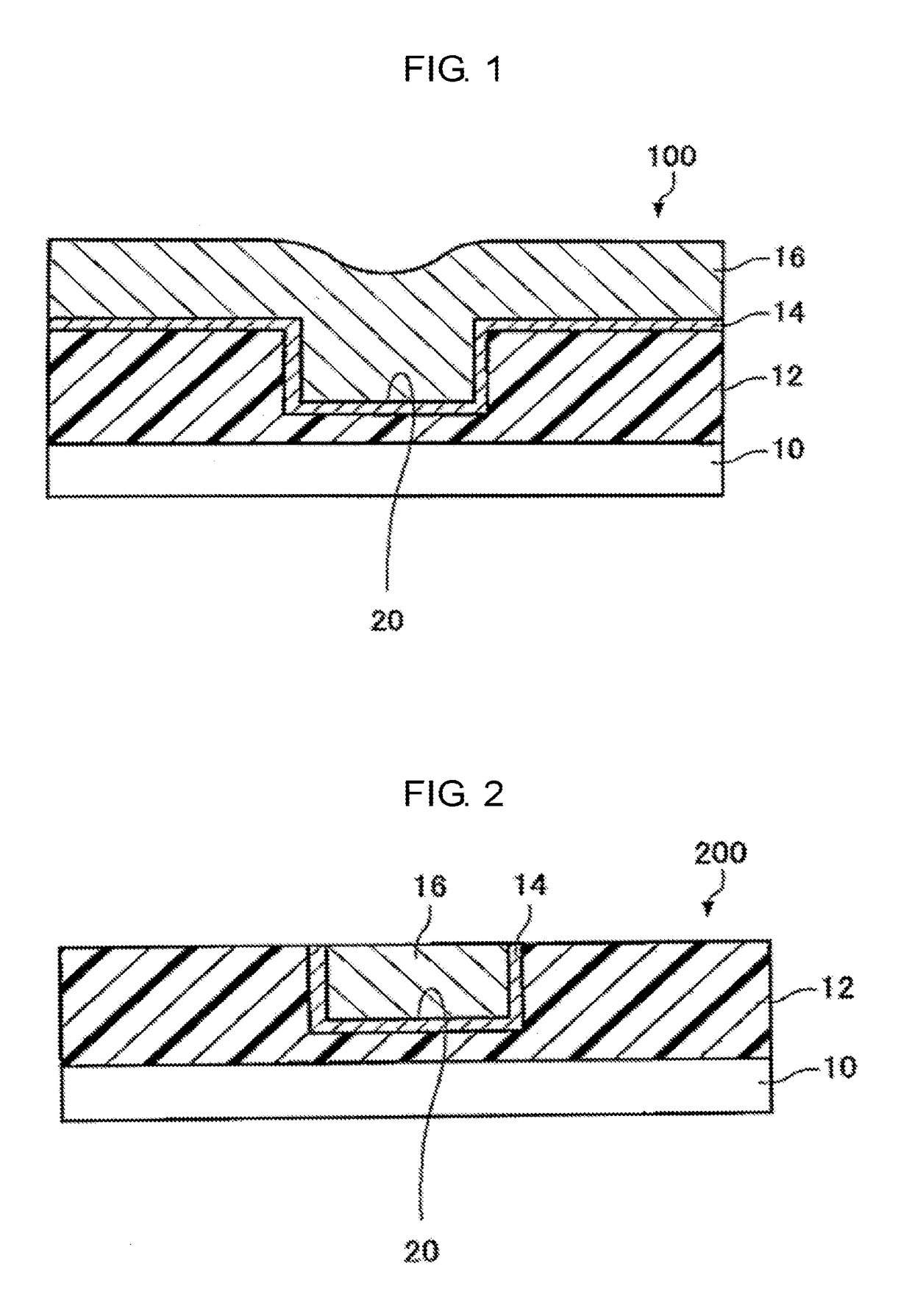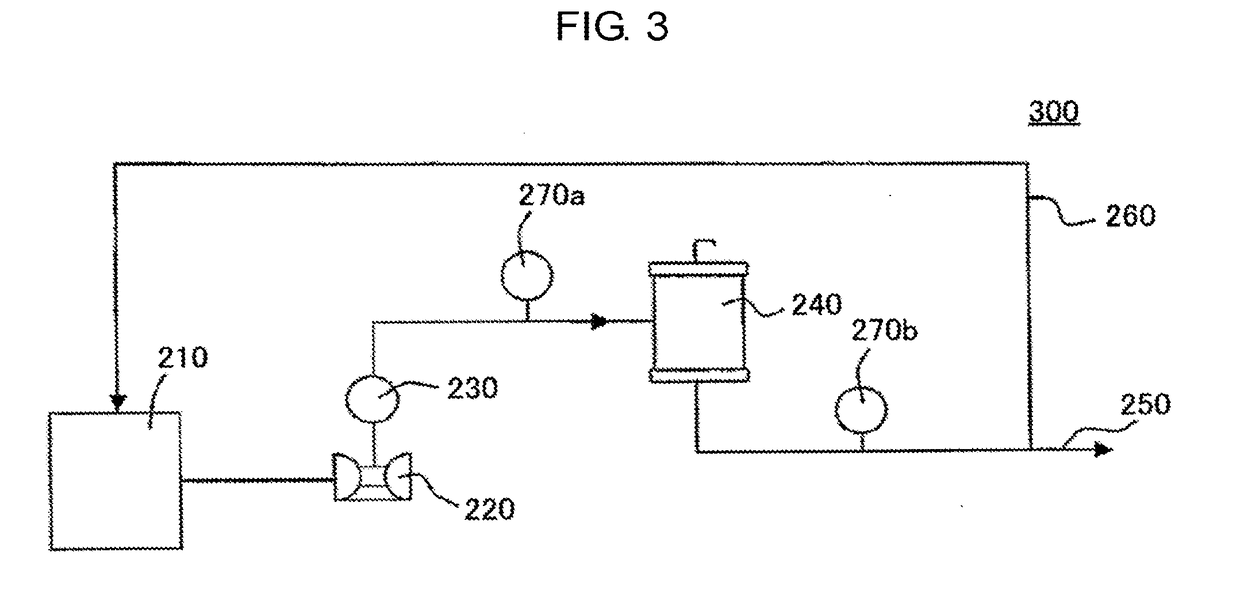Semiconductor treatment composition and treatment method
a technology of semiconductor and composition, applied in the direction of lapping machines, other chemical processes, polishing compositions, etc., can solve the problems of affecting the performance the surface of the polishing machine is easily contaminated with iron, and the device may fail to work normally, etc., to achieve excellent filtration characteristics, reduce damage applied, and improve productivity
- Summary
- Abstract
- Description
- Claims
- Application Information
AI Technical Summary
Benefits of technology
Problems solved by technology
Method used
Image
Examples
example 1
4.1. Example 1
4.1.1. Preparation of Semiconductor Treatment Composition (Concentrated-Type Semiconductor Treatment Composition)
[0114]A polyethylene container was charged with each component listed in Table 1 in the ratio listed in Table 1. After the addition of a proper quantity of ion-exchanged water, the mixture was stirred for 15 minutes. Ion-exchanged water, potassium hydroxide, and sodium hydroxide were optionally added to the mixture so that the total amount of the components was 100 parts by mass to prepare a composition having the pH, the K content, and the Na content listed in Table 1.
[0115]After the addition of 0.01 parts by mass of colloidal silica (“PL-1” manufactured by Fuso Chemical Co., Ltd., primary particle size: 15 nm) to 100 parts by mass of the composition, the mixture was filtered using the filtration device 300 illustrated in FIG. 3 (filtration step). The filtration device 300 illustrated in FIG. 3 includes a supply tank 210 that stores and supplies the composi...
example 24
4.3. Example 24
4.3.1. Preparation of Semiconductor Treatment Composition (Non-Dilution-Type Semiconductor Treatment Composition)
[0146]A polyethylene container was charged with each component listed in Table 3 in the ratio listed in Table 3. After the optional addition of potassium hydroxide and sodium hydroxide so that the pH, the K content, and the Na content listed in Table 3 were obtained, the mixture was stirred for 15 minutes.
[0147]The resulting semiconductor treatment composition (non-dilution-type semiconductor treatment composition) was filtered in the same manner as in Example 1, except that a filter in which a membrane-type cartridge filter “PE-CLEAN” (manufactured by Pall Corporation, nominal filtration rating: 0.05 micrometers, length: 10 inches) was provided in a housing, was used as the filter 240. The composition was sampled on a timely basis, and filtration was stopped when the number of particles having a particle size of 0.1 to 0.3 micrometers included in the semic...
example 25
4.4. Example 25
[0148]A semiconductor treatment composition (non-dilution-type semiconductor treatment composition) was prepared in the same manner as in Example 24, except that the composition was changed as listed in Table 3, and used directly as a treatment agent (resist stripper) as it is. Various evaluation tests were performed in the same manner as in Example 24.
4.5. Examples 26 to 29 and Comparative Examples 6 to 9
[0149]A semiconductor treatment composition (non-dilution-type semiconductor treatment composition) was prepared in the same manner as in Example 24, except that the composition was changed as listed in Table 3, and used directly as a treatment agent (etchant or resist stripper) without being diluted. Various evaluation tests were performed in the same manner as in Example 24.
4.6. Evaluation Results
[0150]The composition of each semiconductor treatment composition and the evaluation results are listed in Tables 1 to 3.
TABLE 1Example1234567SemiconductorCompound ATMAH0....
PUM
 Login to View More
Login to View More Abstract
Description
Claims
Application Information
 Login to View More
Login to View More - R&D
- Intellectual Property
- Life Sciences
- Materials
- Tech Scout
- Unparalleled Data Quality
- Higher Quality Content
- 60% Fewer Hallucinations
Browse by: Latest US Patents, China's latest patents, Technical Efficacy Thesaurus, Application Domain, Technology Topic, Popular Technical Reports.
© 2025 PatSnap. All rights reserved.Legal|Privacy policy|Modern Slavery Act Transparency Statement|Sitemap|About US| Contact US: help@patsnap.com



